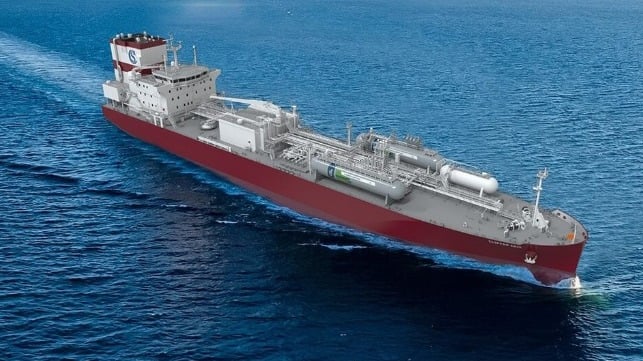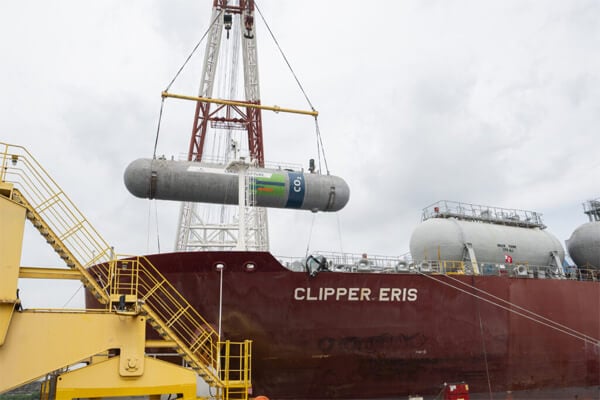Solvang LPG Tanker Ready to Launch New Onboard Carbon Capture Pilot

A pilot project involving Wärtsilä, MAN Energy Solutions, and the research institute SINTEF and working with Norwegian shipping company Solvang is ready to launch its pilot test for a new onboard carbon capture and storage system. According to the companies, launching the pilot testing is an important milestone in the project which began in 2021 and conducted its first tests in 2022.
“Onboard carbon capture combined with existing cleaning technology is a significant shortcut to decarbonization of the world’s deep-sea fleet. This stands out as one of the more promising solutions for future vessels,” says Edvin Endresen, CEO of Solvang.
Over the past few months, the 2019-built LPG tanker Clipper Eris has been in dry dock for a full retrofit. The vessel which is 18,000 dwt arrived in November at the Seatrium Admiralty yard in Singapore and the companies report the team was at the yard on January 16 marking the completion of the installation project.
Seatrium was contracted to install a seven-megawatt capacity carbon capture system from Wärtsilä. The capture system uses amine scrubber technology to pull about 70 percent of the CO2 out of the exhaust gas from the main engine. The CO2 stream will be chilled, liquefied, and stored on board the vessel for later offloading. Part of the project added large tanks visible on the deck of the vessel. Seatrium carried out engineering, procurement, upgrading of electrical and automation systems, and integration of the carbon capture and compression/storage system.

The retrofit adding the carbon tanks is taking place in Singapore (Solvang)
“The introduction of carbon capture and storage capabilities on board the Clipper Eris is a major leap forward for maritime sustainability,” says Roger Holm, President of Wärtsilä Marine. “It represents a system change that has been made possible by close collaboration between our companies.”
The Clipper Eris is the first vessel to be outfitted with this version of the technology and the pilot is scheduled to run for a year. The Norwegian shipping company received funding from the Norwegian State, through Enova, in 2023, making it possible to start the pilot project.
For OCCS to be a success on a larger scale, Solvang notes that more shipping companies and industry stakeholders must see the benefits and join in. Solvang CEO Edvin Endresen points to challenges with infrastructure and global regulations that need to be addressed for OCCS technology to succeed in the shipping industry.
“CO2 can be recycled and used in land-based industries, but the global infrastructure for discharge for shipping needs to be developed fast. In addition, IMO must implement global regulations with benefits and penalty schemes for achieving the set goals. Predictability is necessary for the industry to invest in solutions for reducing CO2 emissions,” says Endresen.
Solvang hopes this technology becomes a milestone for the world’s trading fleet on route to zero emissions. The company highlights that it has seven new vessels under construction, all designed and ready for installation of OCCS technology.
